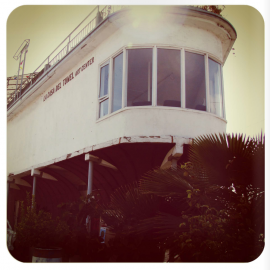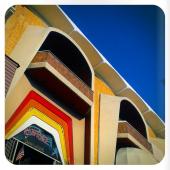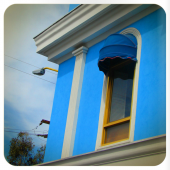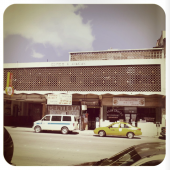‘Arquitopías’ by Guillermo Echeveste | Tijuana, Mexico
Excerpts from Guillermo Echeveste's 'Arquitopías', an e-book about historical and contemporary architecture in Tijuana.
Architecture is an essential component to the cultural heritage of a community. It gives people the opportunity to develop in every aspect of their life. You can say that architecture is the more democratic of the fine arts. Whether it is an opulent, modest or poor construction, it still fulfills its function: to shelter. Tijuana is no exception: the architecture has developed its own characteristics and personality throughout the city. This personality is rather eclectic. A survey of this remarkable mix of architectural styles is the main object of this project, focused specifically on the downtown area of Tijuana.
Archture is an essential component to the cultural heritage of a community. It gives people the opportunity to develop in every aspect of their life. You can say that architecture is the more democratic of the fine arts. Whether it is an opulent, modest or poor construction, it still fulfills its function: to shelter. Tijuana is no exception: the architecture has developed its own characteristics and personality throughout the city. This personality is rather eclectic. A survey of this remarkable mix of architectural styles is the main object of this project, focused specifically on the downtown area of Tijuana.
Based on the concern for a visible continuum of this city’s history, this investigation aims to remind the community of the city center’s architectural heritage. This is why this project is titled ARQUITOPÍAS, a newly coined term that results from the words architecture and heterotopias.
 Michel Foucault describes “heterotopia” as a complexly space opposite to ‘utopia’ (an unreal space). A ‘heterotopia’ is for Foucault a real space, physically created by the people. It is a locatable site in the city, but where all spaces of a society are represented, invested in and/or answered to. It is a space that can be used to understand what can no be perceived at first glance.
Michel Foucault describes “heterotopia” as a complexly space opposite to ‘utopia’ (an unreal space). A ‘heterotopia’ is for Foucault a real space, physically created by the people. It is a locatable site in the city, but where all spaces of a society are represented, invested in and/or answered to. It is a space that can be used to understand what can no be perceived at first glance.
The result of these two concepts is “Arquitopias”: architectures, “real spaces” that are easily detectable in the city, and individually understood. They recall other places, times and memories, where identity is strengthened and its present and past are reflected or evoked in the architecture.
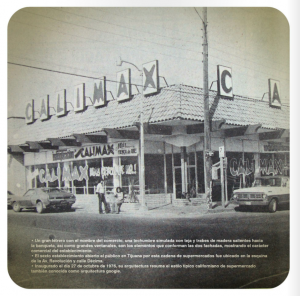 Through these experiences, the community reinforces its identity and attachment to the city. Appreciating these buildings and knowing their historical and architectural value in turn ensures their protection, maintenance and future life through the community’s efforts. With the recognition and knowledge of both physical and temporal spaces within downtown Tijuana, the new generations can strengthen their self-recognition of the site. Recognizing these spaces as witnesses and participants in small or big histories has shaped its inhabitants, and therefore the history and culture of Tijuana.
Through these experiences, the community reinforces its identity and attachment to the city. Appreciating these buildings and knowing their historical and architectural value in turn ensures their protection, maintenance and future life through the community’s efforts. With the recognition and knowledge of both physical and temporal spaces within downtown Tijuana, the new generations can strengthen their self-recognition of the site. Recognizing these spaces as witnesses and participants in small or big histories has shaped its inhabitants, and therefore the history and culture of Tijuana.
From Guillermo Echeveste's 'Arquitopías.'
Guillermo Echeveste is a young artist living and working in Tijuana, Mexico. He received a Bachelor Degree in Fine Arts from the Autonomous University of Baja California (UABC) and is currently enrolled at UABC as a Graduate of the Arts. His work ‘I Am Not This Body’ was part of the international show ‘Cruzando Fornteras’ at IMAC, Tijuana, in the Summer 2014.
